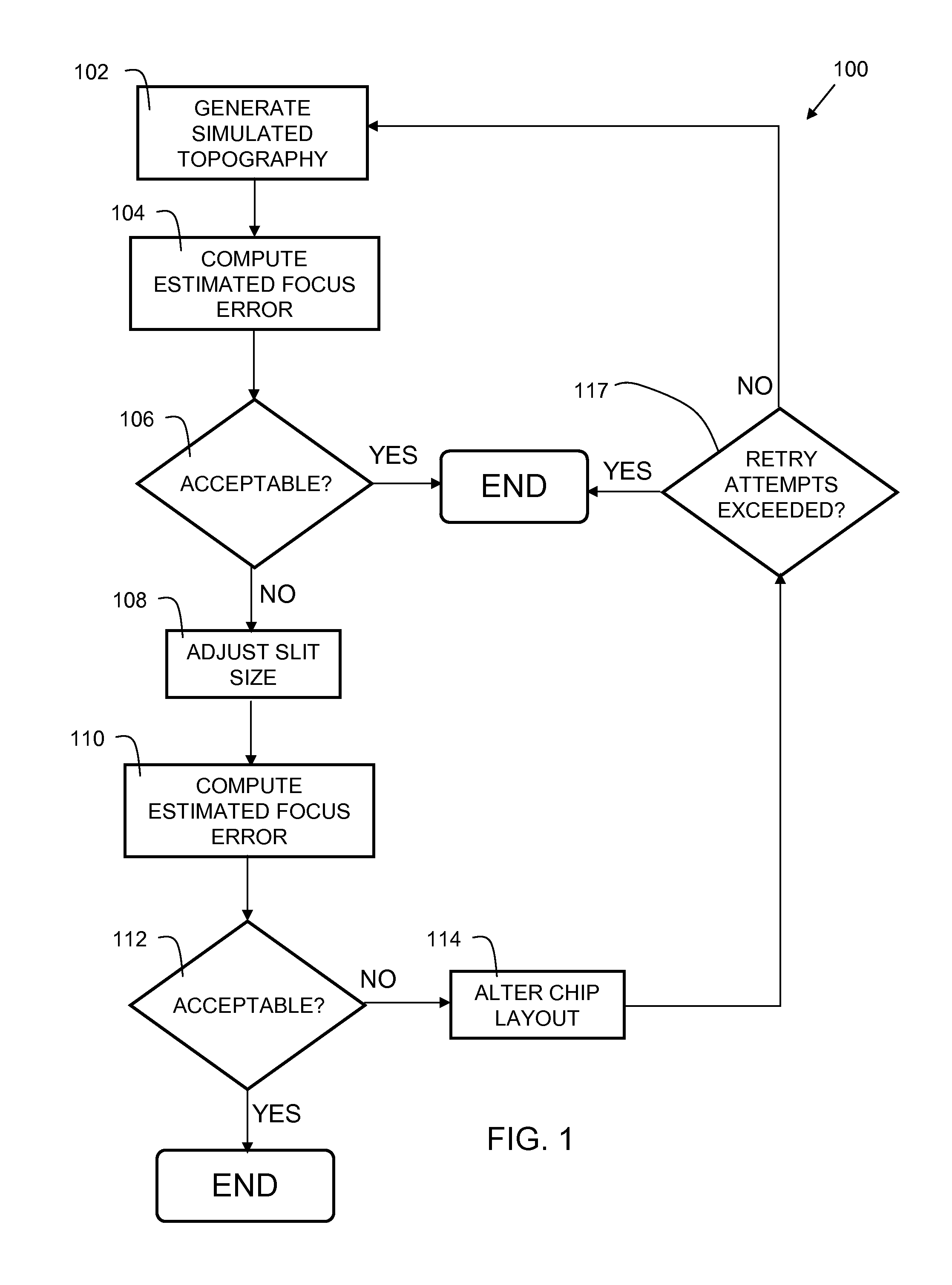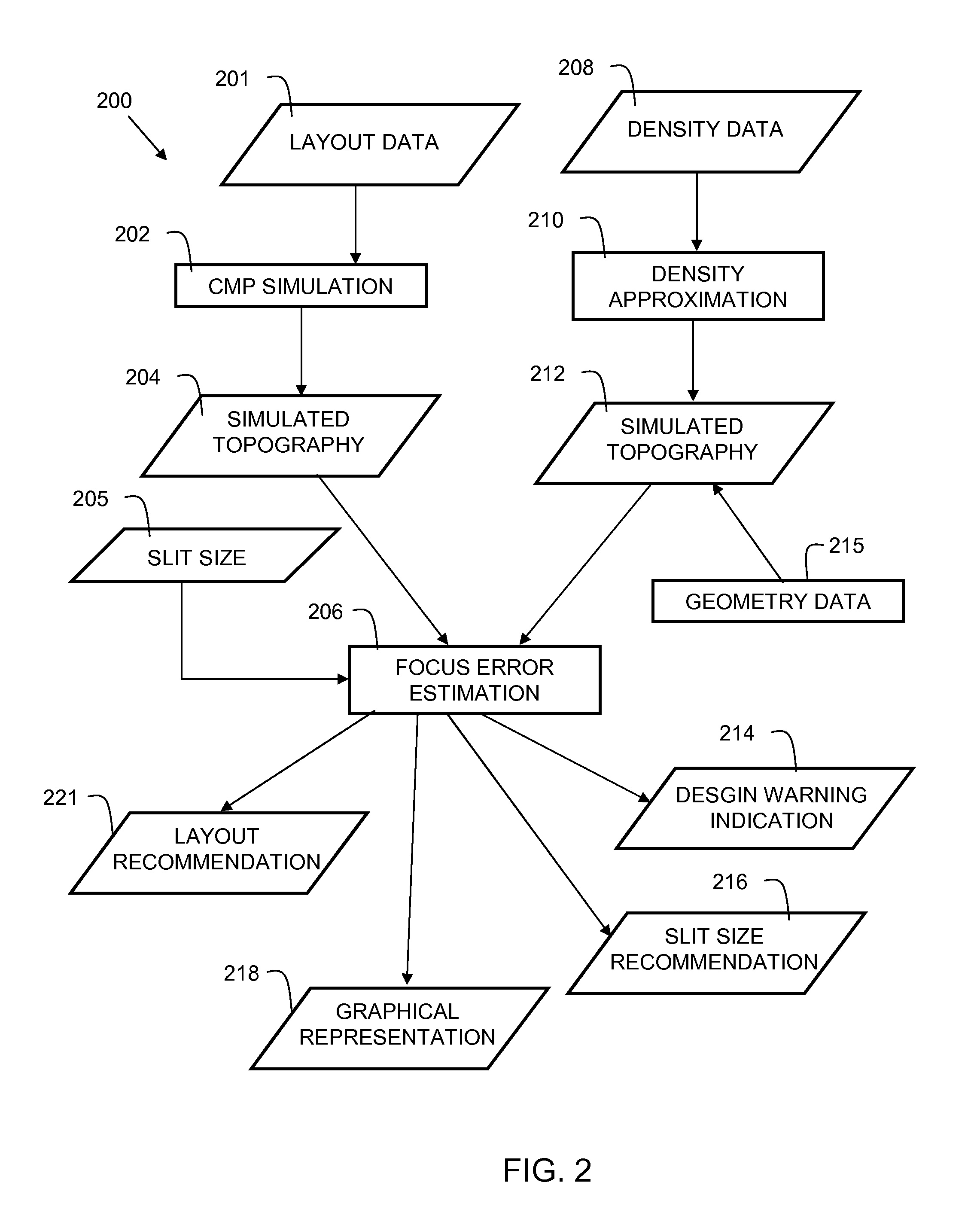Method and system to predict lithography focus error using simulated or measured topography
a lithography and focus error technology, applied in the field of semiconductor fabrication, can solve problems such as the computation of the focus error value of the chip
- Summary
- Abstract
- Description
- Claims
- Application Information
AI Technical Summary
Benefits of technology
Problems solved by technology
Method used
Image
Examples
Embodiment Construction
[0014]Topography refers to the variation in height (Z) above the surface of a substrate. In semiconductor fabrication, typically a planarization step, such as a chemical mechanical polish (CMP) is performed to make the surface of the substrate smooth, such that a subsequent layer of the semiconductor can be formed. Typically, the first step in forming a layer of a multilayer integrated circuit (IC) is deposition of a mask layer, followed by a patterning step. Regions of the mask are cured via a lithographic process. Lithography tools focus an image onto the mask layer to cure a portion of the mask, while other parts of the mask remain uncured. The result is a pattern that is used in formation of subsequent layers used in the semiconductor fabrication process. Ideally, the planarization step makes the substrate completely smooth. However, in practice, there are variations in height (Z variations) due in part to the differing material characteristics of the various materials (e.g. pol...
PUM
 Login to View More
Login to View More Abstract
Description
Claims
Application Information
 Login to View More
Login to View More - R&D
- Intellectual Property
- Life Sciences
- Materials
- Tech Scout
- Unparalleled Data Quality
- Higher Quality Content
- 60% Fewer Hallucinations
Browse by: Latest US Patents, China's latest patents, Technical Efficacy Thesaurus, Application Domain, Technology Topic, Popular Technical Reports.
© 2025 PatSnap. All rights reserved.Legal|Privacy policy|Modern Slavery Act Transparency Statement|Sitemap|About US| Contact US: help@patsnap.com



